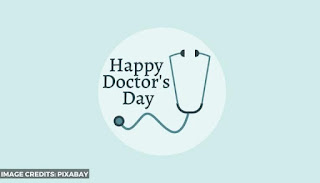Whole Person Paradigm
This term was introduced to us by our coaching Guru as we used to
call him lovingly, Mr Brajamohandas. In my first ever article, Managing
your Manager, I did try to touch upon the peripheral aspect of a human
being suggesting that when a person comes out to work, they is much more
than just employees. They are family people, they have friends, some
might also be studying and if we consider situation of the total person
then we have a better chance of understanding or dealing with their
situation.
However now I know that is just one dimension of the person. Even when we talk about an individual in so many roles we are looking at his or her physical dimensions and not yet looking at aspects of emotions, mental health, and spiritual health.
The whole person paradigm looks at a person not from the perspective of where the person is right now but also where he is coming from, where he wants to go and most importantly where can he go.
The challenge is how to find that out in a real time situation. Recently I posted a video on my Facebook page where Greg Braden spoke about the science behind changing the thought pattern. He explained that a positive affirmation is than much more than just a thought. It is embedded in the connect with the emotions which has time and again been proved in the ancient art of healing.
Having come this far, I either have your attention or your intrigue or a challenge to say what more can she tell me. Let me be very honest here. Looking a person from a whole person perspective is not easy. So don't be fooled. However the benefits are worth it. So let me outline them for you.
Now to the main and penultimate question, how do we look at a person from a whole person paradigm. It is simple yet takes a lot of practice
Ideal scenario when you are in the process of developing someone… but more importantly when you genuinely want to hear someone out. In personal life, in professional life, its not about counseling, directing, mentoring, or so many jargon that we use in day to day lives, but more about just being there, for one another, as family; as friends; bringing us closer ; call them Relationship Etiquette. But I think they are long forgotten now.
I think I would just summarise by saying, it should never be about," I told you so." but more about ."I am here for you."
In case you have any further question with this regards I will be happy to answer them individually. My id is nupur@facilitatingexcellence.co.in.
Nupur Dwivedi Pandey
Director
However now I know that is just one dimension of the person. Even when we talk about an individual in so many roles we are looking at his or her physical dimensions and not yet looking at aspects of emotions, mental health, and spiritual health.
The whole person paradigm looks at a person not from the perspective of where the person is right now but also where he is coming from, where he wants to go and most importantly where can he go.
The challenge is how to find that out in a real time situation. Recently I posted a video on my Facebook page where Greg Braden spoke about the science behind changing the thought pattern. He explained that a positive affirmation is than much more than just a thought. It is embedded in the connect with the emotions which has time and again been proved in the ancient art of healing.
Having come this far, I either have your attention or your intrigue or a challenge to say what more can she tell me. Let me be very honest here. Looking a person from a whole person perspective is not easy. So don't be fooled. However the benefits are worth it. So let me outline them for you.
- When you see a person as a whole you see are more compassionate as you understand them better
- You are more excited as you see not what they are doing but what are capable of.
- And which mean you always see positive in others helping them reach to the next level and in that attempt you also cross over to another level.
Now to the main and penultimate question, how do we look at a person from a whole person paradigm. It is simple yet takes a lot of practice
- Listen to the person and only to the person
- This also means do not reflect your thoughts in any way or form on the person
- Let them choose their direction
- Let you flow with them
- No rights, no wrongs
Ideal scenario when you are in the process of developing someone… but more importantly when you genuinely want to hear someone out. In personal life, in professional life, its not about counseling, directing, mentoring, or so many jargon that we use in day to day lives, but more about just being there, for one another, as family; as friends; bringing us closer ; call them Relationship Etiquette. But I think they are long forgotten now.
I think I would just summarise by saying, it should never be about," I told you so." but more about ."I am here for you."
In case you have any further question with this regards I will be happy to answer them individually. My id is nupur@facilitatingexcellence.co.in.
Nupur Dwivedi Pandey
Director

Comments
Post a Comment